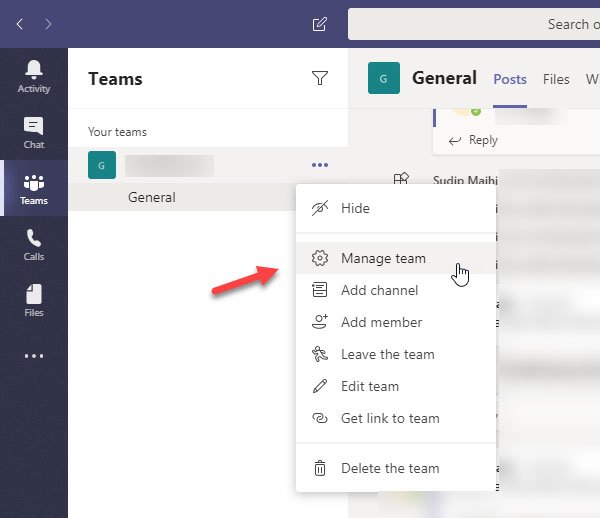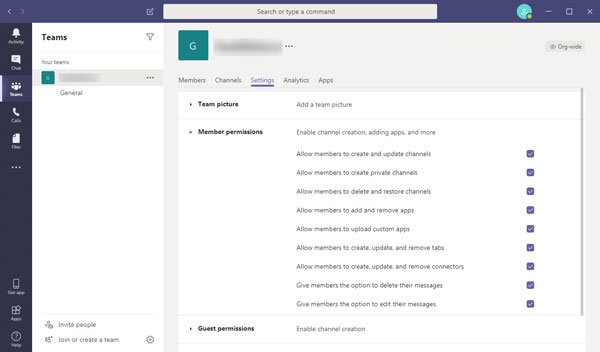Microsoft Teams lets users have three different types of roles and permissions. In this post, we will check out the user permissions or limitations of all the roles so that you can appoint someone for doing a job. Here is everything you might want to know about user permissions and capabilities in Microsoft Teams. We will also see how to change permission for a team.
There are three types of roles, and they are-
- Owner
- Member
- Guest
Owner permissions or capabilities in Microsoft Teams
An owner is the administrator of a team, and one team can have more than one owner. Owner account holders have the maximum features and permissions. To be specific, the following permissions and capabilities are included in an owner account.
- Create a team and channel
- Participate in private chat and channel conversation
- Install and uninstall apps, bots, and connectors
- Share files with some people in a conversation
- Share the chat file with others
- Add and remove any Member and Guest
- Invite others and can be invited by other people
- Remove and edit messages
- Check out the organization chart
- Change team permission
- Create a new tab
- Handle all the mentioned (@name)
- It can use emoji, GIF, etc.
- Archive team and restore that whenever possible
Member permissions and capabilities in Microsoft Teams
A member has fewer options than an owner, but he/she can do almost all the essential tasks in a team. The member account is suitable for them who are in your project but not in the admin position.
- Create a team and channel
- Participate in private chat and channel conversation
- Share all channel files and chat files
- Install apps, tabs, bots, etc.
- Edit and delete posted messages
- Find and join public teams
- View organization chart
Guest permissions and capabilities in Microsoft Teams
Guest account holders have minimal options, and it is suitable for them, who are not appointed in your organization, but you want to chat with a person. For example, he/she can be your business client, vendor, or any other outsider.
- Create a channel but not the team
- Can participate in a private chat and channel conversation
- Share a channel file
- You can invite them via work or school account for Office 365
- Delete and edit a message
Now, if you have created a team and you want to manage permissions for other people (Members and Guests), the following section will help you.
Microsoft Teams – Available permissions for Members and Guests
An admin or owner can manage these permissions for Members and Guests-
- Allow members to create and update channels
- Allow members to create private channels
- Allow members to delete and restore channels
- Allow members to add and remove apps
- Allow members to upload custom apps
- Allow members to create, update, and remove tabs
- Allow members to create, update, and remove connectors
- Give members the options to delete their messages
- Give members the option to edit their messages
- Allow guests to create and update channels
- Allow guess to delete channels
In other words, even if the member account holders have those capabilities, you can prevent them from using it in your team.
How to change Permissions in Microsoft Teams
To change or manage Roles, Permissions & Capabilities in Microsoft Teams, follow these steps-
- Open Manage team window
- Go to the Settings tab
- Expand Member permissions and Guest permissions
- Add or remove the tick from checkboxes
To get started, you need to open the Microsoft Teams app or the official website. After that, select a team and click the three-dotted button to choose the Manage team option.

Following that, go to the Settings tab and expand the Member permissions and Guest permissions panels. Here you can find all the options mentioned above.

Now you need to add or remove the tick from the checkboxes to allow or block permission.
These settings are team-based. That means you can set different permissions for different teams.
This post will show you how to make a person Host, Presenter, etc in Microsoft Teams Meeting during the meeting, before it is scheduled or before it begins.
Leave a Reply